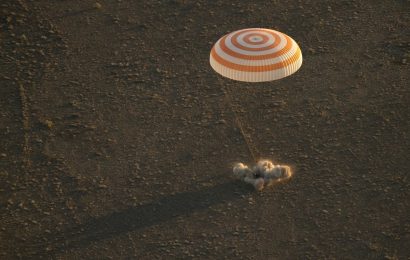The American space agency’s InSight lander recently detected its first seismic event on planet Mars. Even though the spacecraft had been on Mars since November, the probe’s seismometer (SEIS) has been active since December, and the first seismic activity was picked up by the probe’s sensors on 6th April.
This is the first seismic signal ever detected on the surface of a planetary body other than the Earth and the Moon. However, it wasn’t possible to extract any information in order to make a more definitive statement about the source or distance of the rumble. Philippe Lognonné, SEIS team lead at the Institut de Physique du Globe de Paris (IPGP) in France stated:
“We’ve been waiting months for our first marsquake. It’s so exciting to finally have proof that Mars is still seismically active. We’re looking forward to sharing detailed results once we’ve studied it more and modeled our data.”
Professor Tom Pike, who leads the British side of the seismometer package said: “It’s probably only a Magnitude 1 to 2 event, perhaps within 100km or so. There are a lot of uncertainties on that, but that’s what it’s looking like.” While Dr Bruce Banerdt, Nasa’s chief scientist on the InSight mission added:
“In fact, if you live in Southern California like I do, you wouldn’t even notice this one in your day-to-life. But since Mars is so quiet, this is something that we’re able to pick up with our instrument.”
Scientists stated that its source could be either movement in a crack inside the planet, or the shaking from a meteorite impact. They now want to send the probe to identify the quakes and help build a clearer picture of the Red Planet’s interior structure and compare it to Earth’s internal layering in order to learn something new about the different ways in which the planets have evolved throughout the years. They also mentioned that the character of the rumble reminded them of the type of data the Apollo sensors have gathered on the lunar surface.



